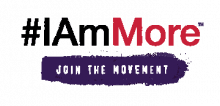It is imperative, as school leaders, that we have the vision and commitment to help teachers and students wholly believe that literacy for all is possible.

Dr. Louisa Moats believes this implicitly, and she should know. Dr. Moats has been a teacher, psychologist, researcher, and graduate school faculty member. She is the author of many influential scientific journal articles, books, and policy papers on the topics of reading, spelling, language, and teacher preparation. Her work in literacy is impressive, and sitting down with her to talk about literacy was a deep dive into her passion for what works when it comes to literacy. Here’s what we talked about:
Why can’t we just “teach reading” to kids who are struggling to learn to read?
Dr. Louisa Moats: When kids don’t read well, everything else about schooling is adversely affected. Not knowing how to read as well as one’s peers can create behavior problems that further complicate learning to read. These behaviors get worse yearly if nothing is done. The further behind a student gets in learning to read, the more comprehensive the remediation needs to be. And this kind of remediation takes time and expertise.
Generally, the kind of time that is required to get students back on track is difficult for school administrators to schedule. This becomes a cycle that is tough to break. Another issue with teaching reading to students who are far behind is that teachers who work with these students need to be experts in language and foundational reading skills. This is not an expertise taught in a regular teaching program. It’s one that comes with master’s-level work and experience.
How does a history of school failure affect students differently?
Dr. Louisa Moats: When kids have a history of school failure, they develop characteristics that make learning to read even more difficult:
- Hopelessness and lack of trust in self
- Poor reading habits, like reliance on guessing
- Place high value on peer interactions
- Limited knowledge of the outside world
Is there a way to break the cycle to get to literacy?
Dr. Louisa Moats: When students feel that teachers believe in them and support their growth, they are more confident both academically and socially at school. The relationship has to come before the learning. This can be hard to accomplish when teachers work in schools where academic benchmarks are the only point of discussion.
School leaders who bridge the gap by setting personal growth goals alongside their academic goals help foster literacy. An amazing way to get a whole school community on the same page is by having a staff meeting to build understanding. When children feel more secure at school, they are more prepared to learn.
Is there a concrete plan that can help get schools to foster both academic and personal growth goals?
Dr. Louisa Moats: One of the best ways I know of to help students is to build relationships with students. The more they feel that you accept them where they are, the more they will open up to learning. The I Am More movement can be a great way to help teachers and students showcase their differences as a way to grow closer together. The end result is that kids feel safe at school and open up to learning.
https://www.facebook.com/SchoolLeadersNow/videos/vb.218440288516096/309100452988494/?type=2&theater
To learn how to implement the I Am More movement at your school, save and print the staff meeting kit with easy instructions. Once you do that, you’ll be automatically entered to win a trip to ISTE 2019. Visit BelieveLiteracyisPossible.com/contest.



